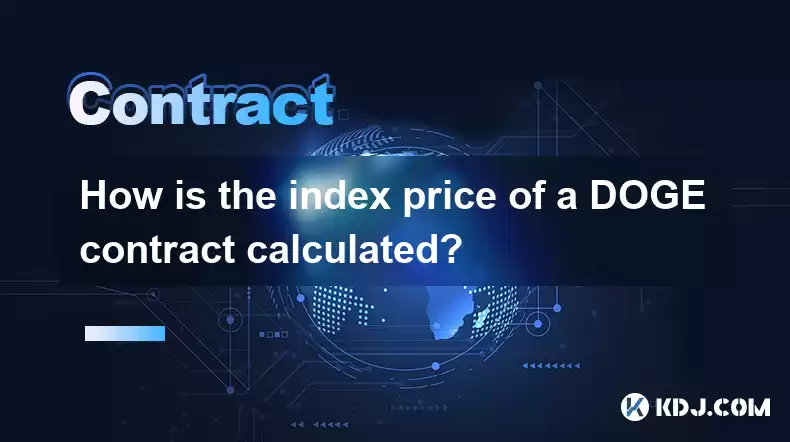-
 Bitcoin
Bitcoin $116700
0.24% -
 Ethereum
Ethereum $3973
4.34% -
 XRP
XRP $3.283
7.68% -
 Tether USDt
Tether USDt $1.000
0.01% -
 BNB
BNB $789.8
2.27% -
 Solana
Solana $176.2
3.31% -
 USDC
USDC $0.9999
0.00% -
 Dogecoin
Dogecoin $0.2238
5.14% -
 TRON
TRON $0.3389
-0.51% -
 Cardano
Cardano $0.7907
4.03% -
 Stellar
Stellar $0.4527
10.02% -
 Hyperliquid
Hyperliquid $41.07
4.27% -
 Sui
Sui $3.794
1.77% -
 Chainlink
Chainlink $19.49
10.40% -
 Bitcoin Cash
Bitcoin Cash $580.9
0.74% -
 Hedera
Hedera $0.2617
4.32% -
 Avalanche
Avalanche $23.41
3.67% -
 Ethena USDe
Ethena USDe $1.001
-0.03% -
 Litecoin
Litecoin $122.4
1.38% -
 Toncoin
Toncoin $3.364
1.49% -
 UNUS SED LEO
UNUS SED LEO $8.988
0.37% -
 Shiba Inu
Shiba Inu $0.00001295
2.82% -
 Uniswap
Uniswap $10.62
5.75% -
 Polkadot
Polkadot $3.922
4.46% -
 Dai
Dai $1.000
0.01% -
 Bitget Token
Bitget Token $4.494
2.15% -
 Monero
Monero $268.0
-1.30% -
 Cronos
Cronos $0.1523
3.68% -
 Pepe
Pepe $0.00001127
4.43% -
 Aave
Aave $285.4
4.85%
How is the index price of a DOGE contract calculated?
DOGE perpetual contract index prices are weighted averages from multiple exchanges, prioritizing high-volume, liquid markets to minimize manipulation and offer a fair market reflection, though slight discrepancies and delays can occur.
Mar 24, 2025 at 05:07 pm

Key Points:
- DOGE perpetual contracts' index price is typically calculated using a weighted average from multiple reputable cryptocurrency exchanges.
- The weighting assigned to each exchange reflects its trading volume and liquidity. This aims to provide a robust and representative price.
- Data feeds from these exchanges are crucial; delays or inaccuracies in these feeds can affect the index price's accuracy.
- Discrepancies can arise from different exchange prices and the time lag in data aggregation.
- The exact methodology varies slightly depending on the specific exchange offering the DOGE contract.
How is the index price of a DOGE contract calculated?
The index price of a DOGE perpetual contract isn't derived from a single source but rather a composite of several exchanges' prices. This is crucial to mitigate manipulation attempts on any one exchange. Think of it as a more robust average, offering a fairer reflection of the market's overall sentiment towards DOGE.
The calculation usually involves a weighted average. Exchanges with higher trading volume and greater liquidity generally receive a higher weighting in the calculation. This prioritizes data from exchanges where DOGE trading is most active and reliable, minimizing the influence of less liquid markets.
The process starts with selecting reliable exchanges known for their large trading volume and robust security measures. These exchanges provide real-time price data feeds, which are constantly monitored for accuracy and consistency.
Data feeds are the lifeblood of this calculation. If a data feed experiences a temporary outage or transmits inaccurate information, it can significantly impact the index price. To mitigate this, exchanges often implement backup data feeds and rigorous quality control measures.
The weighting process itself is not static. It's often adjusted based on ongoing market analysis. If a particular exchange experiences a significant increase or decrease in trading volume or liquidity, its weighting in the index calculation will be reassessed to reflect the change. This ensures the index price remains as accurate as possible.
Timing is crucial in this process. The time it takes to gather price data from different exchanges and perform the weighted average calculation can introduce a slight delay between the actual market price and the reported index price. This lag is usually minimal but can become noticeable during periods of high volatility.
Discrepancies between the index price and the spot price on individual exchanges are possible. These discrepancies are primarily due to the time lag in data aggregation and the inherent differences in prices across different exchanges. They typically remain small but can increase during times of significant market swings.
Each exchange offering DOGE perpetual contracts might have slightly different methodologies for calculating the index price. They might select different exchanges for inclusion, use varying weighting schemes, or employ different data aggregation techniques. It's essential to consult the specific exchange's documentation to understand its precise method.
How often is the DOGE contract index price updated?
The index price is usually updated very frequently, often several times per second, to keep pace with the fast-moving cryptocurrency market. This ensures the price reflects the current market conditions as accurately as possible.
What happens if one of the data sources fails?
Most platforms have backup data sources and sophisticated algorithms to handle temporary outages. If a primary data source fails, the system automatically switches to a backup to maintain continuous index price updates. However, prolonged or widespread failures can impact the accuracy and reliability of the index price.
How is the weighting determined for each exchange?
The weighting is typically based on a combination of factors, most importantly trading volume and liquidity. Exchanges with higher 24-hour trading volume and deeper order books generally receive a higher weighting, reflecting their greater influence on the market price. The exact formula for determining the weights often remains proprietary to the exchange.
Can the index price be manipulated?
While the use of multiple exchanges and weighted averages aims to minimize the risk of manipulation, it's not entirely impossible. A coordinated effort to artificially inflate or deflate the price on several exchanges could potentially influence the index price. However, such manipulation is challenging due to the complexity and the need to control numerous exchanges simultaneously.
What are the implications of an inaccurate index price?
An inaccurate index price can lead to incorrect liquidation prices for leveraged traders, potentially resulting in unnecessary losses. It can also distort the market's perception of DOGE's value, impacting trading decisions. The reliability of the index price is paramount for the fair and efficient functioning of the DOGE perpetual contract market.
Disclaimer:info@kdj.com
The information provided is not trading advice. kdj.com does not assume any responsibility for any investments made based on the information provided in this article. Cryptocurrencies are highly volatile and it is highly recommended that you invest with caution after thorough research!
If you believe that the content used on this website infringes your copyright, please contact us immediately (info@kdj.com) and we will delete it promptly.
- Coinbase, Cosmos, and dYdX: Navigating the Crypto Currents
- 2025-08-09 06:30:16
- BNB Price, Altcoins, and Predictions: What's the Buzz?
- 2025-08-09 06:30:16
- Crypto Presale Projects Primed for Gains in 2025: A New Yorker's Take
- 2025-08-09 06:50:15
- Ruvi AI: The Millionaire Maker Poised for a Price Spike?
- 2025-08-09 06:50:15
- Cold Wallet, CoinMarketCap, Cardano & XRP: Navigating Crypto's Next Big Wave
- 2025-08-09 07:10:15
- Hedera (HBAR) Price Surge: Market Cap Soars, What's Next?
- 2025-08-09 07:10:15
Related knowledge

What is the difference between realized and unrealized PNL on KuCoin?
Aug 09,2025 at 01:49am
Understanding Realized and Unrealized PNL on KuCoinWhen trading on KuCoin, especially in futures and perpetual contracts, understanding the distinctio...

How does KuCoin Futures compare against Binance Futures in terms of features?
Aug 09,2025 at 03:22am
Trading Interface and User ExperienceThe trading interface is a critical component when comparing KuCoin Futures and Binance Futures, as it directly i...

What is the distinction between mark price and last price on KuCoin?
Aug 08,2025 at 01:58pm
Understanding the Basics of Price in Cryptocurrency TradingIn cryptocurrency exchanges like KuCoin, two key price indicators frequently appear on trad...

What are the specific maker and taker fees on KuCoin Futures?
Aug 08,2025 at 08:28am
Understanding Maker and Taker Fees on KuCoin FuturesWhen trading on KuCoin Futures, users encounter two primary types of fees: maker fees and taker fe...

Can you explain the difference between cross margin and isolated margin on KuCoin?
Aug 09,2025 at 02:57am
Understanding Margin Trading on KuCoinMargin trading on KuCoin allows traders to borrow funds to increase their trading position beyond their actual c...

How can I open a long position on KuCoin Futures?
Aug 09,2025 at 02:07am
Understanding KuCoin Futures and Long PositionsOpening a long position on KuCoin Futures means you are speculating that the price of a cryptocurrency ...

What is the difference between realized and unrealized PNL on KuCoin?
Aug 09,2025 at 01:49am
Understanding Realized and Unrealized PNL on KuCoinWhen trading on KuCoin, especially in futures and perpetual contracts, understanding the distinctio...

How does KuCoin Futures compare against Binance Futures in terms of features?
Aug 09,2025 at 03:22am
Trading Interface and User ExperienceThe trading interface is a critical component when comparing KuCoin Futures and Binance Futures, as it directly i...

What is the distinction between mark price and last price on KuCoin?
Aug 08,2025 at 01:58pm
Understanding the Basics of Price in Cryptocurrency TradingIn cryptocurrency exchanges like KuCoin, two key price indicators frequently appear on trad...

What are the specific maker and taker fees on KuCoin Futures?
Aug 08,2025 at 08:28am
Understanding Maker and Taker Fees on KuCoin FuturesWhen trading on KuCoin Futures, users encounter two primary types of fees: maker fees and taker fe...

Can you explain the difference between cross margin and isolated margin on KuCoin?
Aug 09,2025 at 02:57am
Understanding Margin Trading on KuCoinMargin trading on KuCoin allows traders to borrow funds to increase their trading position beyond their actual c...

How can I open a long position on KuCoin Futures?
Aug 09,2025 at 02:07am
Understanding KuCoin Futures and Long PositionsOpening a long position on KuCoin Futures means you are speculating that the price of a cryptocurrency ...
See all articles

























































































